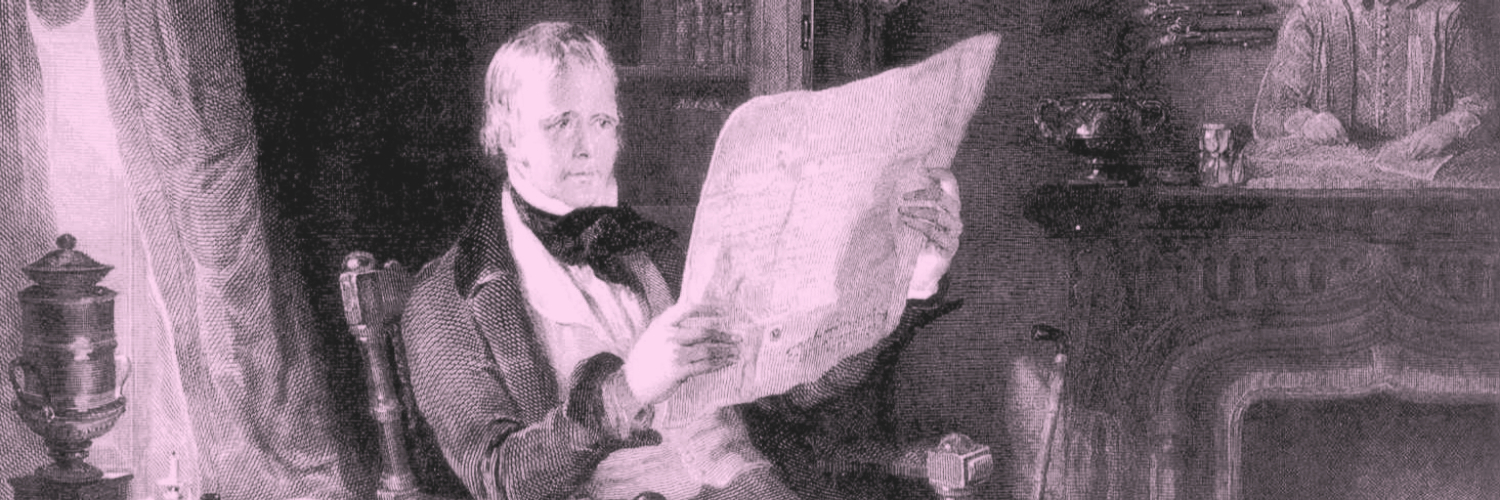One of the most striking characteristics of antiquarianism in the Romantic period was the creation of what have become known as "Romantic interiors", rooms, houses, even castles, whose form and furnishing were calculated to express the owner's personal relationship with history.
These were not cabinets of curiosities but privately inhabited spaces, and while they were not entirely new in the period from 1789 to 1851, nor unknown afterwards, these were the years that saw their greatest flowering.
The dates I have chosen are inevitably somewhat arbitrary, but they are significant. The storming of the Bastille was not the only event of 1789 to have large consequences for the study of the past. This was also the year of the bitter dispute between antiquaries and the architect James Wyatt over his interventions at Salisbury Cathedral. The row split the Society of Antiquaries, introduced the concept of architectural conservation into the public realm and launched a new phase of antiquarianism. From being generally passive, studying and documenting the artifacts of the past, antiquaries became highly active as conservationists, campaigning journalists, authors, and, occasionally, artists. This dynamic relationship with history encouraged the creation of Romantic interiors. By 1851 the mood had changed. The organizers of the Great Exhibition reflected in their arrangement of material artifacts a more utilitarian and didactic ethos. Public museums, university departments and government bodies were taking over from private individuals in the interpretation of the past.
I have considered examples in England, Scotland, and France, a geographical scope that reflects the fact that antiquaries in these countries were closely aware of each other. Many were friends and several were collaborators. Antiquaries were busy in Wales, Germany, Italy, and elsewhere, but their work was not interconnected to the same extent. Of the dozens, or even hundreds, of examples I might have considered I have concentrated on nine. I chose them to span the range of activities and approaches from the strictly documentary, exemplified by John Lingard (1771-1851), by way of the poet and novelist Walter Scott (1771-1832), on to the remarkable brothers known as the Sobieski Stuarts,
who took antiquarianism beyond the realm of fiction into fantasy, forgery, and what from this distance of time looks not unlike performance art.
In this period of active, Romantic antiquarianism, engagement with the past often took the form of narrative. It might be written, painted, enacted, or created through artifacts. It is the latter which are the subject of this article, personal narratives-through-objects. These were spaces which, while they drew on ideas about history, approached more closely to theatre and autobiography. Furnished and sometimes entirely constructed out of a combination of old and new materials, they were the objective expressions of the personalities, thoughts, feelings, and beliefs of their creators. They might take the form of domestic spaces, sometimes they were infiltrated into museums and on occasion they were created in churches. Almost all were the work of men. Indeed in England and Scotland the antiquarian interior was typically an exclusively male, celibate space in which the intrusion of women or children was anathema. In France the case was interestingly different and I have chosen instances that underline the contrast. The French antiquary might inhabit a space not only Romantic, but also Bohemian in which women, children, and overt expressions of sexuality might be intrinsic to its ethos.
In the most extreme cases the creator of a Romantic interior became such an inextricable part of his creation as to become a living artifact, apparently the product, as much as the projector of his material context. This too was perhaps a more Gallic phenomenon. Victor Hugo, who created spectacular Romantic interiors in his homes in Paris and on Guernsey, makes such symbiosis a central theme in Notre Dame, where he describes Quasimodo's relationship to the cathedral thus: "so, little by little, growing up in sympathy with the cathedral, living there, sleeping there, hardly ever going out, submissive always to its mysterious force he came to resemble it...and he seemed not only its occupant, but indeed its own natural content" (Hugo 247).
Like a snail or an oyster (and similarly unprepossessing), Quasimodo is the shape of his shell, impossible to understand without it and unable to exist for long apart from it. The relationship between animate and inanimate is perfectly reciprocal. Such cases in real life were rare, but they did occur, and this article considers one that approaches such an extreme, the Rouennais antiquary Eustache-Hyacinthe Langlois (1777-1837).
It begins, however, with a consideration of the popular idea of the Romantic interior and the extent to which it corresponded to reality.
The Antiquary's Cell
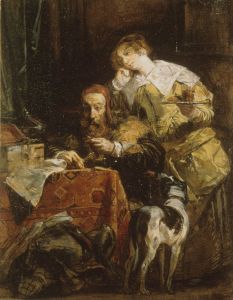
Fig. 1 Richard Parkes Bonington. The Antiquary (1826). Courtesy of Wallace Collection, London.
The image of the antiquary in the popular imagination came complete with a characteristic setting. Bonington's The Antiquary (1829) offers a typical jumble of miscellaneous objects and papers to contextualize the figures. E W Cooke's The Antiquary's Cell (1835) goes further. It relies entirely on the context to evoke the character of the absent antiquary, whose personality and temperament are conveyed through the artifacts he has gathered around himself. When working on the picture, Cooke bought or borrowed props, which he arranged with great care and made several preparatory studies, including one by candlelight (Wainwright 39-40). The individual elements include armor and a "fine carved chair" that Cooke bought from Edward Hull's shop in Wardour Street in Soho, as well as various rolls of parchment (Wainwright 40).
Armor, carved wood, (usually dark or darkened oak) and papers were the staples of the Romantic interior, along with stained glass, which Cooke does not show, and, sometimes, tapestry. Beyond that, details might vary; what mattered was the impression of profusion, mystery, and disorder. Cooke referred to the "olla podrida" of curiosities in his composition, which recedes into evocative gloom (Wainwright 40). The antiquary's empty chair is the focus of the painting. Its drapery bears the impress of a recent occupant, and it glows, not only with the red silk Cooke bought especially for it, but also with an implied inner power. The occupant of this seat we feel, when present, will complete the picture. The description of the scene as a "cell" plays on links between antiquarianism and both monasticism and magic. A kind of magus, the antiquary's galvanizing imagination will reveal the hidden order in the chaos, as a magnet draws iron filings into a pattern.
Interiors like this were not absolutely new in the late eighteenth century, but they grew in number throughout the period and developed to the point where they became part of polite culture. As the enthusiasm for the past extended from objets de vertu to "curiosities" it was no longer necessary to be as rich as Horace Walpole at Strawberry Hill or William Beckford at Fonthill to use the artifacts of the past to create a home expressive of its owner's personality. By the same token, for those who were rich the great influx of looted (or salvaged) antiquities from the Continent offered unprecedented opportunities for purchase and display. As Clive Wainwright writes: "In 1780 [Romantic interiors] were unusual and by 1850 so many existed that they constituted a major strand of taste in interior decoration" (25). By 1835, when Cooke painted The Antiquary's Cell, the scene was already recognizable and popular with the public, while Soho in general and Wardour Street in particular had become synonymous with a lively antiques trade.
The principal source for the image of the antiquarian home was undoubtedly Scott's novel The Antiquary, of 1815. Jonathan Oldbuck's lair is clearly the inspiration for Cooke's picture. It would have been in the minds of his audience, and it resonated through the work of other artists and writers. The details are so particular that it is worth quoting the whole long paragraph in which Scott introduces the reader to Oldbuck's study, and thereby to much that is essential to his character. Young Lovel sees it for the first time through a haze of dust, the chambermaid having taken advantage of Oldbuck's absence to attempt, much to the antiquary's irritation, to clean it, a female intrusion which he much resents.: ‘It was, indeed, some time before Lovel could, through the thick atmosphere, perceive in what sort of den his friend had constructed his retreat. It was a lofty room of middling size, obscurely lighted by high narrow lattice windows. One end was entirely occupied by book-shelves, greatly too limited in space for the number of volumes placed upon them, which were, therefore, drawn up in ranks of two or three files deep, while numberless others littered the floor and the tables, amid a chaos of maps, engravings, scraps of parchment, bundles of papers, pieces of old armour, swords, dirks, helmets and Highland targets. Behind Mr Oldbuck’s seat (which was an ancient leathern-covered easy-chair, worn smooth by constant use), was a huge oaken cabinet, decorated at each corner with Dutch cherubs... the top of this cabinet was covered with busts, and Roman lamps and paterae, intermingled with one or two bronze figures. The walls of the apartment were partly clothed with grim old tapestry, representing the memorable story of Sir Gawaine’s wedding, in which full justice was done to the ugliness of the Lothely Lady; although, to judge from his own looks, the gentle knight had less reason to be disgusted with the match on account of disparity of outward favour, than the romancer has given us to understand. The rest of the room was panelled, or wainscoted, with black oak, against which hung two or three portraits in armour, being characters in Scottish history, favourites of Mr Oldbuck, and as many in tie-wigs and laced coats, staring representatives of his own ancestors. A large old-fashioned oaken table was covered with a profusion of papers, parchments, books, and nondescript trinkets and gew-gaws, which seemed to have little to recommend them, besides rust and the antiquity which it indicates. In the midst of this wreck of ancient books and utensils, with a gravity equal to Marius among the ruins of Carthage, sat a large black cat, which, to a superstitious eye, might have represented the genius loci.... [T]he floor, as well as the table and chairs, was overflowed by the same mare magnum of miscellaneous trumpery, where it would have been as impossible to find any individual article wanted, as to put it to any use when discovered. (The Antiquary 31-32)’
As in Cooke's picture, gloom and the profusion of objects in apparent chaos are the main impression, although Scott, typically, creates a little ironic distance by attributing the particularly dim atmosphere to the commonplace in the form of dust. There, as in Cooke, are the armor and the dark carved wood. Scott also makes explicit two elements Cooke only implies: the suggestion of the occult in the shape of the cat and the dubious quality of some of the objects. Beyond that Scott also describes what cannot easily be conveyed in painting but is of the essence for the Romantic interior, the conflation of old and new. The paintings on Oldbuck's wall are divided equally between the "characters" from Scottish history (in what may be old pictures or modern pictures of old subjects) and the family portraits of Oldbuck's own forbears. Here the individual is himself inserted into history. Such claims of direct personal kinship with some chosen aspect of the past were typical of the antiquarian interior, a space where time was not so much suspended as in a manner rearranged to suit the occupant.
Image and Reality
Before discussing particular interiors in more detail we might pause to consider how far the popular image of the Antiquary's Cell reflected reality. It would be misleading to suggest that it was a necessary concomitant of antiquarian activity. The Romantic interior required a suspension of disbelief, and if its presence was expressive of the personality of its creator, so its absence would also be a reliable indicator of intellectual temperament. To some antiquaries this romantic, imaginative interaction with the past appeared as a positive menace to their enterprise.
On a continuum from skepticism to enthusiasm we must surely place the Catholic priest John Lingard at the former extreme. I have found no description of the rooms in which he lived and worked. This in itself suggests that they were of no particular significance to him, and it would be surprising, given his commitment to objectivity in his studies, if he viewed the notion of the Romantic interior as anything other than absurd. Indeed Lingard, who was a humorous man, made what was surely a satirical comment on the whole phenomenon when he named the Catholic chapel which he had built in his parish at Hornby, Lancashire, Henry VIII's Chapel. This ironic dedication to the monarch who took England out of communion with Rome referred to the fact that it was the profits from Lingard's history of the Reformation, which became a controversial best-seller, that paid for the chapel. It also turned on its head the concept of a building's expressing its creator's empathy with historic figures.
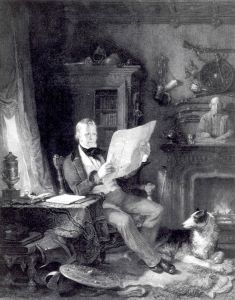
Fig. 2 John Burnet (after William Allan). Sir Walter Scott in his Study (1831). Private Collection.
Towards the center of the continuum Scott himself presents an unsurprisingly close match to the popular image. The Antiquary's Cell could be seen as an only slightly heightened version of his arrangements at Abbotsford. Indeed Cooke, and his audience, may well have had in mind William Allan's Sir Walter Scott in his Study, painted four years earlier. In Allan's painting Scott is at home at Abbotsford, the farmhouse he had bought, renamed, reshaped, and furnished so to make it appear to be his ancestral home, a post-Reformation castellated manor house supposedly built out of monastic ruins. He occupies the essential carved "oaken" chair, he studies a parchment, Mary Queen of Scots' proclamation of her marriage to Darnley, and he is surrounded by armor and objects in which historical and personal significance combine and in which his novels and poetry are evoked: the sporran of Rob Roy, the keys of the old Tolbooth, and some of the Napoleonica he gathered on the battlefield after Waterloo are all objects that play prominent parts in his work and bind together history and romance through the person of the author.
Scott's position in literature is suggested by his physical placement between the two writers he most admired, represented here by artifacts: the bust of Shakespeare and the neo-classical urn that was a present to Scott from Byron. The image is tamed somewhat by comparison with Oldbuck's study. The room is untidy rather than chaotic, and the sinister cat has been replaced by the more comfortable presence of Maida, Scott's favourite stag-hound, but this is equally a speaking scene in which the furniture does the talking. Allan, in his account of the picture when it was shown at the Royal Academy in 1832, provided a detailed list of the objects portrayed.
Some years later Scott's admirer, the publisher, bookseller, and popularizer of antiquarian topics, John Britton (1771-1857), inhabited what might be called, unkindly, a poor man's Abbotsford. In his home, as in his publications, Britton was just one step ahead of his public, and his suburban villa at St. Pancras showed how far and deep, a decade after Scott's death, the Romantic interior had penetrated middle-class society. In June 1843 Britton published a description of his house. This was in itself significant. Scott declined to publish an account of Abbotsford, even when it was one of the most famous houses in Europe, thinking that to do so would be in poor taste and that "Horace Walpole with all his talents makes a silly figure when he gives an upholsterer's catalogue of his goods and chattels at Strawberry Hill" (Journal 461).
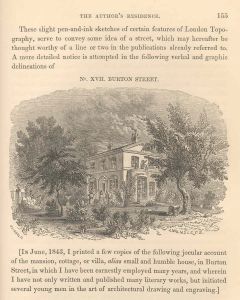
Fig. 3 John Britton. John Britton's House and Garden in Burton Street, London, from Autobiography (1850). Private Collection.
That was in 1828. Fifteen years later Britton had no such reservations about publicizing Number 27 Burton Street. This was partly a reflection of his character, but it was also, as his description makes clear, a factor of the change of taste in an age which knew more and cared more about imitating exactly the principles of medieval architecture. He too compares his home with Walpole's but with none of Scott's deference. To Britton that "'gew-gaw' that flimsy 'paste-board house,' –that 'Gothic toy-castle'" was self-evidently ridiculous, what an estate agent might talk up, Britton suggests, as the "most-to-be-admired example of modern domestic monastic architecture in Europe" (Autobiography 155). We might pause to note the fact that the concept of "modern domestic monastic" as an architectural style had now become a plausible part of an estate agent's vocabulary.
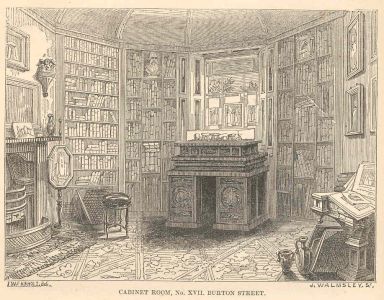
Fig. 4 John Britton. The Stonehenge Cabinet Room, from Autobiography (1850). Private Collection.
Britton saw his house as more scholarly and more serious, morally as well as intellectually, than Walpole's. Accordingly, Britton, anxious always for both publicity and respectability, permitted himself an antiquarian interior that expressed erudition and a plethora of important acquaintance but stopped well short of anything that could be regarded as occult, eccentric, or even untidy. His Octagonal Cabinet Room, designed round the truly remarkable Stonehenge Cabinet that Britton commissioned, is the epitome of suburban antiquarianism.
Octagonal rooms had been a feature of Gothic Revival architecture since Fonthill.
Abbotsford, though not Gothic, had one, and as a centralized yet not a classical space it had many uses and could be successful even on a small scale. Britton's description of his room, however, somewhat justifies Scott's reservations about the tastefulness of such accounts: ‘It is lighted by a stained glass window, and contains a Cabinet of Celtic Antiquities, a series of Portraits of Antiquaries, with a small Collection of choice Books, some of which were privately printed, and are presents from their respective authors, while many of the others are presentation copies, with autographs and portraits of the donors...The miser repeatedly counts his money, and gloats over its amount and value; but is incapable of obtaining any other pleasure or advantage from it than the selfish exultation of possession. Not so the man who possesses choice works of art and of literature: these are calculated to impart other and more dignified feelings than ever can be known by the worshipper of Mammon... virtue, patriotism, glory, wisdom. (Autobiography 3:158)’
For some antiquaries, even those who were, unlike Lingard, were collectors, the popular image of their natural habitat could be an irritant. Thomas Frognall Dibdin's breathless account of Francis Douce's rooms no doubt captures something of Douce's spectacular collection but owes as much to literary and artistic conventions as to observation. ‘It will delight you, I am sure, to hear that Prospero is yet in the full exercise of his "enchanter’s wand"...His maple-wood bookcases rejoice the eye by the peculiar harmony of their tint, -with the rich furniture they enclose. Here a bit of old bright stained glass –exhibiting the true long-lost ruby tint: -there, an inkstand, adorned in high cameo-relief, by the skill of John of Bologna...the rarest China cups... chess-men...used by Charles V and Francis I on their dining together... the very staff with which Regiomontanus used to walk on his house-top by moonlight... Magic lore, and choice Madrigals...and the parchment roll which Handel wielded in beating time on the first representation of the Messiah. (Dibdin 45) ’ Apart from the maple-wood instead of the more usual oak, this is a by-now familiar agglomeration, with old and new, the intrinsically valuable, the associationally interesting, and the figure of the antiquary-as-wizard all combined in splendid chaos. Indeed Dibdin's description proved easier to relate to literature than to life. "All absolute Bedlam" was Douce's tart response when he read it, "not one of these articles do I possess or know anything about them" (Joliffe 20).
Moving towards the other end of the continuum, past Scott as it were, (for the moment), we come to those for whom the inhabitation of the past through objects was more, or less, than art, those for whom there was no self-conscious or ironic distinction between their sense of self and their creation. Edward Willson (1771-1854), the Lincoln architect, may have been one such. His obituary in The Builder, written by Britton and largely devoted, like most of his writings, to Britton's own importance. He describes Willson as a "bibliomaniac" who had "filled his house—mostly through my agency and mediation—with tomes of all sizes and ages" ( “Edward James Willson” 4-5). The catalogue of his post-mortem sale in November 1854 lists three hundred ninety-five lots of books. These are followed by prints, paintings, "ancient and mediaeval remains," "antique porcelain," and "miscellaneous" (A Catalogue). The latter are fewer in number but cover an interestingly typical range:
449 An Oak Panel, with the Crucifixion carved in high relief, and three ditto, Heraldic badges451 Various fragments of Stained Glass...452 Carved Oak Arm chair453 A Panel containing rich pieces of ditto, of the fourteenth and fifteenth centuries...... 455 A Demi-suit of Armour... 5456 A Helmet and Breast Plate, and the Head of a Pole-axe...... 461 An old Sheep Bell...462 A very large Roman Urn, with narrow mouth, faulty...464 A quantity of old Tapestry468 A Large Number of Fragments of ancient Manuscripts... 10469 A large Whip, known as a "Caistor Gad."470 Bronze Head of an Indian Staff of Honour, and an embroidered Chinese Slipper471 Cast of the Bust of Shakespeare at Stratford on Avon...474 Sundry Vertebrae of the Ichthyosaurus with other Organic Remains (A Catalogue 24-25)
The list might be Cooke's for an assembly of props, a virtual checklist of antiquarian requisites, but these were the actual contents of Willson's house.
With the Sobieski Stuart brothers and E.H. Langlois we approach the far end of the spectrum, where artifact, identity, and meaning are inextricably interfused. The interiors they created require more detailed discussion. Scott also reappears, for, at the end of his life, he seems to have come to a less detached view of his home and its possible meanings.
The Sobieski Stuarts and the death of Jonathan Oldbuck
The two brothers who came to be known as the Sobieski Stuarts began life as John Carter Allen (?1795-1872) and Charles Manning Allen (?1799-1880). They were the sons of Thomas Gatehouse Allen, an English naval officer who, they claimed, was the legitimate son of Charles Edward Stuart, the Young Pretender. Not surprisingly, accounts of their lives vary substantially in detail. The most recent, an article by Steven Robb, published in 2003, purports to add more information, although without any indication of its sources (Robb 3-8). The principal critical discussion is Hugh Trevor-Roper's essay “The Highland Tradition of Scotland” in The Invention of Tradition (1992). It offers an outline of their remarkable career, in the course of which they not only created the concept of tartan as Scottish national dress, but also designed many of the tartans in use today, while claiming historical sources for them in their most famous, or notorious, publication, the Vestiarium Scoticum, of 1842.
The use of historic artifacts to create a context for themselves and their activities was vital to the brothers' success. Literally in the home that they made for themselves from 1839 on the estate of Lord Lovat in Inverness-shire, and literarily in their writings, they created a setting in which their claims appeared plausible. In their house and in their pseudo-autobiographical fiction Tales of the Century, published in 1847, the role of objects and their associations, their authenticity or otherwise is a constant theme, a shadow narrative to the brothers' own story.
Trevor-Roper's essay, like the book of which it forms a part, was essentially a debunking exercise. He was not unsympathetic to these "engaging charlatans" whom he revisited in The Invention of Scotland, admiring the fact that they "went the whole hog," but his predominant interest was in establishing what the brothers were not (Trevor-Roper 216-236). Later, Stewart and Thompson's unambiguously titled Scotland's Forged Tartans established what the Vestiarium Scoticum was not (Stewart and Thompson). This having been so thoroughly done, my interest has been to consider what the brothers actually were. What they themselves came to believe about their inheritance it is not possible to know, but they lived out their claims with complete integrity to the end of their lives. That they were serious antiquarian scholars is not in doubt.
They also deployed history to serve their own ideas in the present, physically inhabiting the identity that they claimed for themselves, making them forgeries, perhaps, rather than fakes.
In considering their career, the uncontroversial part of the brothers' pedigree, which has attracted little attention, is not without interest. Their mother was Katherine Matilda Manning, a daughter of the Reverend Owen Manning (1721-1801), vicar of Godalming in Surrey, a fellow of the Society of Antiquaries and of the Royal Society, county historian of Surrey, and a distinguished scholar of Old English whose annotated translation of the will of King Alfred was published in 1788 (Ross and Collins). Their father, Thomas Allen, remarried after his first wife's death and, having lost all his money in speculation, lived in hiding from his creditors in Boulogne-sur-mer under his second wife's name, Salmond. He apparently took no interest in his sons' account of their ancestry (and his), but claimed for himself the Earldom of Erroll (Robb). Something clearly ran in the family, even if it was not the blood of the Stuarts.
The first glimpse of them in history, as far as I can discover, is in 1822, before they made any claims to royal descent. They were present at George IV's "jaunt" to Scotland, the progress choreographed by Scott that may be said to have begun the modern "Highland Tradition." Scott saw them there and they, perhaps, saw him (Scott, Letters 198-202). That same year John Allen published a book of verse. The Bridal of Caolchairn and other Poems appeared in several editions in London and Edinburgh, some of which gave the author as "John Hay Allan," the Scottish version of "Allen," while others appeared under the name of "Walter Scott" (Todd and Bowden 999-1000). These latter were actually produced by Scott's own publishers, Hurst, Robinson in London and Archibald Constable in Edinburgh.
Exactly how this first act of impersonation was achieved is not clear but it was the beginning of pattern in the brothers' lives. From now on, regardless of their other claims, the pedigree they might most truthfully claim for themselves was that of Waverley. They inhabited the space between fact and fiction, history and modernity that had been created by Scott in his novels. Scott himself, though he warned against taking these "ingenious" young men and their "exaggerating imagination, which possibly deceives even themselves," at face value, was powerless to stop their progress (Letters 198). It was as if two characters had escaped from his novels and could not be recaptured.
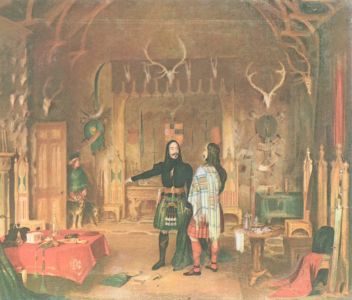
Fig. 5 John and Charles Sobieski Stuart, Self-portrait (c.1842). Private Collection.
The Sobieski Stuarts' living arrangements in their heyday embodied the essence of the Romantic interior as the extension of personality. From 1839 until 1847 they enjoyed the patronage of Lord Lovat who allowed them to choose a site on his land on which he would build for them a home. Lovat was not alone by the late 1830s in taking them seriously as the heirs to the Stuart line. As Elizabeth Grant of Rothiemurchus recalled, "half the clans in the Highlands believed in them; for several years they actually reigned in the north country" (Grant 388). The house that Lord Lovat built for them was, naturally, Gothic, its situation on Eilan Aigas, an island in the Beauly River suitably picturesque. The brothers' self-portrait shows them at home surrounded by the usual profusion of oak, antlers, arms, and miscellaneous curiosities. These may well include the possibly genuine relics of Charles Edward Stuart which the brothers acquired, perhaps from the Scottish revolutionary and adventurer Robert Watson (?1746-1838).
If there is a little less confusion or profusion of objects than in Cooke's painting or William Allan's portrait of Scott, if there is no gloom and no hint of the occult, that is perhaps because the brothers felt their claims to be shadowy enough and wanted to present themselves without any suggestion of further obscurity.
The brothers' effect on visitors who saw them either in their home or at mass, to which they sailed from their island in a boat flying the Stuart standard, tended to reflect the level of faith or doubt in the beholder. The setting was, however, important to everyone. In 1842 the architect A.W.N. Pugin (1812-1852), despite Trevor-Roper's boast that "no Englishman seems to have taken them seriously" (232), found them entirely convincing, and his account shows him forming his impressions as much from the context as the brothers themselves: ‘I have dined with the two princes who are the descendants of the Stewarts. the Eldest is one of the most glorious men I ever knew. he is perfect in his ideas on Christian architecture...they Live on a most romantic Island surrounded by waterfalls & rocks –in a vast glen between the mountains. I was quite delighed.[sic] I could fight for him. he has fitted up a gothic room -& really well done. there is a prophecy in the highlands that the stewarts are yet to be restored. (Collected Letters 373)
’ Even the more skeptical Elizabeth Grant found these "strange brothers [who]...one day announced that they were Stuarts...astonishing." Being less persuaded than Pugin, she remembered their context in a more humdrum way. The house she saw as a "villa," their garden as "pretty" and the waterfall as 'small" (Grant 388). She was struck, however, by the fact that Charles's wife "played the harp like Flora McIvor" and that "crowds went to visit them" (Grant 388). In their own persons the brothers achieved a remarkable resemblance to their pretended ancestors. "They always wore the Highland dress, kilt and belted plaid, and looked melancholy and spoke at times mysteriously" (Grant 388). Unafraid of the new medium of photography, much admired for its veracity, Charles sat for his portrait to the Edinburgh photographers Hill and Adamson in about 1844, and the result bears out the truthfulness of Grant's description and the fact that if the camera does not lie it may be too easily impressed.
Meanwhile the brothers were pursuing their work on the history of tartan. By the time Pugin met them they were on the brink of publication and were held to have been "long and honourably distinguished for their devotion to the Antiquities of the Gael," so much so that they were invited to contribute "a series of outlines of Highland Costume" to the Abbotsford Edition of the Waverley Novels, which appeared that same year (Scott, Abbotsford 4). The posthumous Abbotsford Edition marked another stage in the integration of illusion and reality in and around Scott's fiction. The editors had studied his home and its contents "with care" in order to illustrate the novels with "a Series of Engravings, representing the Pictorial and Antiquarian Museum at Abbotsford," thereby providing "the most instructive graphic commentary that the body of his Writings could receive from any one source" (Abbotsford 3). In addition to which further illustrations were taken from "the real localities of his scenes" and "the real portraits of his personages have been copied" (Abbotsford 4).
Here at the crux of fact and fiction the Sobieski Stuarts inserted themselves with their "invaluable" researches which, it was felt, fully justified "the expectations formed of their projected great Work" (Abbotsford 4). This was the Vestiarium Scoticum which appeared in the same year. It was indeed well received. Queen Victoria, despite the authors' claim to her throne, was a great admirer. Five years later, however, with Tales of the Century, the brothers over-reached themselves. In making public and specific their claims they exposed themselves to wider scrutiny, and the Quarterly Review's response to the book, an extensive essay by Professor George Skene of Glasgow University, cast as a late review of the Vestiarium, destroyed their credibility with many of their admirers (Skene 57-85). The antiquarian relationship with history at its most imaginative had met the academic at its most rigorous and did not survive the impact. The brothers were forced to leave Scotland and spent the next twenty years in Austria.
By the time Tales of the Century appeared Scott had been dead for fifteen years. The book would no doubt have exasperated him. Yet the Sobieski Stuarts' complete identification with their Romantic interior might not have seemed so alien to Scott in his later years when, towards the end of his life, he changed his mind about the advisability of publishing an account of Abbotsford and its contents. He began work on what became Reliquiae Trotcosienses in 1830, after the first of a series of strokes which preceded his death two years later. It was never finished and the full text remained unpublished until 2004. It offers another portrait of the antiquary in literature and life, its main subject the house and the objects within it. These now, as Scott contemplated the end of his life, began to take on lives of their own. By different means he appears to come to the same end as the Sobieski Stuarts, perceiving himself as a construction of his own Romantic interior. It is also possible that in his elaborate title he nodded deliberately towards the brothers and their dubious productions.
Reliquiae Trotcosienses or the Gabions of the Late Jonathan Oldbuck Esq of Monkbarns, is premised on Scott's familiar ironizing of antiquarian method. The title, which means, "of the relics of Trotcosey," refers back to Oldbuck's home on the lands that once belonged to the Abbey of Trotcosey. This was already a joke, a "trotcosey" being a modern Scottish word for a hooded cape in which the wearer could trot, cozily, through the cold like a monk in a habit. The term "gabions" derives from Henry Adamson's poem of 1638, The Muses Threnodie, an early, perhaps the first, account of the imaginative, reciprocal relationship between the antiquary and his collections. Scott amuses himself with mock-scholarly attempts to define the word, which he uses, in effect, to mean "curiosities" of little or no intrinsic value.
Just a year earlier, in 1829, in a letter to Sir Thomas Dick Lauder, in which Scott tried, unsuccessfully, to urge caution towards the Sobieski Stuarts, he pointed out that the (then unpublished) manuscript they claimed had been given to their father by Charles Stuart, and on which they said they had based the Vestiarium Scoticum, had a title in "false Latin I should think not likely to occur to a Scotsman of Buchanan's age" (Letters 201). In choosing false Latin for his own Reliquiae was Scott perhaps parodying their pretensions?
In the Introduction to the published version of Reliquiae David Hewitt draws attention to Scott's distancing techniques. He suggests that the several parts of the book therefore "both are, and are not about Scott and his antiquarian activities, both are and are not about Abbotsford, and are or are not to be taken seriously" (Hewitt xv). This is true so far as it goes, but Scott was here perhaps using irony for more personal purposes in a text that is not a novel (although, as Hewitt points out, it has the three-volume format) but a narrative that develops out of fiction into documentary fact and finishes as autobiography. The false scents laid in the “Introduction,” “Proem,” and “Preface,” through which the reader passes, like a series of air locks, before getting to the main text, are there to protect the author who is unmistakeably present there in propria persona.
The most striking indication that this is a personal apologia is the unremarkable, and by Hewitt unremarked, part of the title, which Scott's lexicographic shenanigans with the rest of it effectively obscure: "the late Jonathan Oldbuck Esq." Oldbuck, the original antiquary, Scott's alter ego, is, we learn, dead, and it is the imminence of death hanging over the Reliquiae that gives it its poignancy. Before he died, we are told, Oldbuck tried to get a friend to write about his collection, but the friend refused, as Scott had earlier refused, on the grounds that it would be ridiculous: "Remember the fate of Woodward who brought every wit in London upon his head by his antiquarian essays" (Reliquiae Trotcosienses 21). What we are presented with instead is supposedly the account he himself left of his gabions, yet the narrator explicitly distinguishes himself from Oldbuck. Who is this then, who has transferred the Oldbuck collection from Monkbarns to his own home and now takes the reader on a tour of it? It must, of course, be Scott though this is left unclear. The incoherence in the narrative mechanism at this point may be due to the author's failing health. It may also be a product of his reluctance, even after so much subterfuge, to emerge fully unmasked into his own text.
Scott goes on to tour Abbotsford in his mind's eye, deploying it like a memory theatre, pausing at significant points to describe the furnishings, the objects and then by association their origin and context. As he goes on the fiction falls away. The characters who emerge from the text to inhabit Abbotsford are not the inventions of Waverley but Scott's own friends and acquaintances, the donors or makers of his collection. The narrative turns into an autobiography-by-objects spoken in his own voice and recalling his own antiquarian feats: "Before I quit the hall I ought to say that the end which terminates it upon the west or left side of the entrance is garnished with spoils from the immortal field of Waterloo, when I collected them in person very shortly after the immortal action" (Reliquiae Trotcosienses 34).
The repetition of "immortal" is one of several moments when the reader is aware of Scott's failing concentration. With fitting irony Lockhart decided after Scott's death that the Reliquiae would indeed show him in as poor a light as Oldbuck's friend had predicted. He declined to publish it. Yet this is the ultimate consummation of the antiquarian relationship between object and text. Beneath its comic armor Reliquiae Trotcosienses is a tragic fragment.
E.H. Langlois and La Vie de Bohème
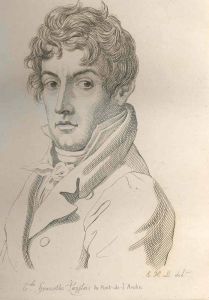
Fig. 6 Mary Turner (after E H Langlois), Engraving from a Self-portrait (c.1815). Private Collection.
With the Rouennais E.H. Langlois, we come to another extreme case. There are points of comparison with Scott and the Sobieski Stuarts in Langlois's story, but also significant differences that illustrate the contrasts between antiquarian personae on either side of the Channel. While England and Scotland were peaceful and relatively wealthy after 1815, post-revolutionary France was much reduced by social upheaval. French antiquaries had a more troubled, indeed violent relationship with history.
Langlois lived in destitution. He was not lacking in a sense of the theatrical or in ironic humor, but he made use of neither in relation to the objects that he had collected and rescued in the aftermath of the Revolution. His apartments in the former Convent of the Visitation were memorable, but not artful. His friend Charles Richard recalled the experience of visiting him, and his description should be quoted as fully as Scott's of Oldbuck's sanctum, for it makes a Gallic pendant to it, the similarities and differences equally striking. ‘It was to the great Convent of the Visitation of St Mary, so deserted, so icy, so melancholy, that the wretched artist had come for shelter, with his seven children and his wife! To find him it was necessary to enter by the cloister door. The visitor crossed a damp and ruined gallery... at the end of this gallery a wooden stair case, in the open air... led to a dusty and decrepit attic. This vast antechamber was inhabited by an extensive family of pet birds which hardly moved to let the visitor through to the door of a study, the only more or less habitable corner in this vast space where the four winds met. The heart contracted horribly on entering the room. Valuable works of art, rich and curious manuscripts, were cast hugger-mugger on the table, on the mantelpiece, on the chairs, on the ground. In winter when, frozen by the north wind, you put your hand on the stove, the iron froze your hand, for there was no fire. No fire in the grate either: the window frame quivered, covered with strips of paper to conceal the wretchedness of this desolate home; the shreds with which it was heaped gave off strange noises, plaintive shiverings, stifled cries. It was his poor little children who ran to hide themselves in this sanctum at the approach of a stranger, like mice in their hole, for they were stark naked!... and, in the midst of this affecting scene, you beheld a man full of dignity, of stoicism and serenity. (Richard 8-10) ’
Some of this is familiar. The profusion of objects, the chaos, the mingling of the precious with the apparently worthless, but overall the impression is very different from the home life of the English or Scottish antiquary. There is nothing staged about the way Langlois lives, nothing funny about him. The poverty is real. The cold is real and so is the nakedness of the children. Indeed the obtrusion of a family into what in the British antiquarian interior, is a celibate male space marks in itself a significant difference. The objects Langlois has around him have not been bought from brokers" shops in Soho but rescued from violent revolution. As Notre Dame is to the world of Waverley, more lurid, more socially realistic, less polite, so is Langlois to Walter Scott. He is not domesticated, as the British antiquary is, either in art or in life.
Yet while the circumstances are real, Richard's description of them is not without conscious literary effect. The gloom, the contractions of the heart, the emphasis on the contrast between the squalor of the room and the nobility of its occupant, rising above his sufferings, are also conventions. They are conventions not of antiquarianism as understood in Britain, however, but of Bohemia, a milieu well-established in the French popular imagination by 1840, the date of Richard's essay. In Richard's text Langlois is cast as an artist, starving in a garret.
In France the idea of the Bohemian was born, like antiquarianism, directly out of the aftermath of the French Revolution, and the two categories overlapped.
In the case of Victor Hugo, who could afford to dress the set more artfully, they were entirely fused. Dickens, visiting Hugo in Paris in 1847, gives another measure of the difference between British and Gallic attitudes. With Scott's and indeed his own novels in mind, he could not take Hugo's Romantic interiors quite seriously. The rooms in the Place des Vosges, where Dickens met the Hugos, do not survive intact, but the interiors of Hauteville House, which Hugo created later on Guernsey, do, and they suggest what it was that Dickens saw.
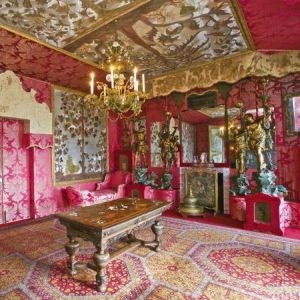
Fig. 7 Hauteville House Guernsey, Gallerie de Chêne. Undated Postcard. SPADEM. (c.1994). Private Collection.
He was mildly scandalized: ‘A most extraordinary place, looking like an old curiosity shop, or the Property Room of some gloomy vast old Theatre. I was much struck by Hugo himself, who looks a Genius, as he certainly is, and is very interesting from head to foot. His wife is a handsome woman with flashing black eyes, who looks as if she might poison his breakfast any morning when the humour seized her. There is also a ditto daughter of fifteen or sixteen, with ditto eyes, and hardly any drapery above the waist, whom I should suspect of carrying a sharp poignard in her stays, but for her not appearing to wear any. Sitting among old armour, and old tapestry, and old coffers, and grim old chairs and tables, and old Canopies of state from old palaces, and old golden lions going to play at skittles with ponderous old golden balls, they made a most romantic show, and looked like a chapter out of one of his own books. (The Letters of Charles Dickens 15)’
It is the objects that turn Hugo, as Abbotsford turned Scott, into a character from one of his own novels. If, as the passing allusion to the Old Curiosity Shop suggests, they were accidentally to propel him into one of his own, Dickens makes clear that the effect would be mildly comic. Yet at the same time the dark drama that Dickens reads, half-seriously, into the scene and its sexual edge, quite foreign to the world of Waverley, give a nervous undertow to his amusement.
In August 1831 the Baron Dupont-Delporte, recently appointed head of the Départment de la Seine-Inférieure, wrote to the Mayor of Rouen suggesting the establishment of a museum in the city to display the antiquities rescued or excavated in the region. The proposed location was the Convent of the Visitation. Langlois was already living in the building in the spectacular squalor described by Richard. He was also giving drawing classes there. In England such a presence would almost certainly have been considered an obstacle. In Normandy it was a positive advantage. Achille Deville, a tax inspector and enthusiastic antiquary who was appointed first director of the museum, immediately requested and was granted permission to hire Langlois "pour l'aider dans la régie et l'adminstration du musée" [to help him with the organization and administration of the museum] (Favigny 15). Having rejected the second floor of the building as being unable to take the weight of the architectural fragments he intended to display, Deville opted instead for the cloisters, where the collection is still displayed today.
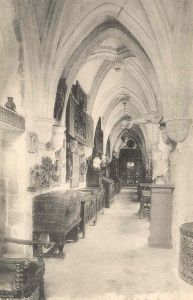
Fig. 8 Musée d'Antiquités, Rouen. Undated Postcard (c.1900). Private Collection.
With the creation of the museum around him Langlois became, if not exactly an exhibit, then a living part of the totality, inhabiting it and ordering it from within. His own collection was absorbed into it during his lifetime, and not only the antiquities. Deville, who was obviously fond of Langlois personally, incorporated Langlois's sword, left over from his military service, into the display (Richard 35). Wandering through the cloisters in Rouen, as Quasimodo wandered through Notre Dame, Langlois would have passed through his own history, among objects that had characterized his career and to some extent formed him. After his death the museum remained, like the shell of a snail, its outlines describing the space his curious character once occupied.
The End of the Antiquarian Interior
Arguably the antiquarian interior never came to an end, indeed as "interior decoration" developed in the second half of the nineteenth century into a significant element of middle-class domestic culture, more people than ever before could express their characters and ideas through the arrangement of objects in their homes. Wainwright quotes Charles Eastlake's advice in Hints on Household Taste (1868) that "[t]he smallest example of rare old porcelain, of ivory carving, of ancient metal-work...should be acquired whenever possible, and treasured with the greatest care...group them together as much as possible. A set of narrow shelves...forming part of a dining-room sideboard would be admirable" (Wainwright 287).
Yet, as Eastlake's detailed instructions make clear, this was now anything but a spontaneous or personal activity; it was rather, as Wainwright says, part of a popular fashion. By the mid-century the antiquarian interior was vanishing. While the idea was absorbed into the mainstream, the reality, in the sense that it has been described here, was on the wane, for the same reasons and to the same extent that antiquarianism itself, of this sort, was dwindling. Collections, such as Douce's and Langlois's, passed at their death into public museums. The flood of Continental antiquities dried up and native medieval objects began at last to attract the attention of professional curators. After years of complaints by antiquaries about the absence of Gothic art from national collections a royal commission of 1850 recommended the establishment of a collection of British antiquities. The British Museum duly appointed Sir Augustus Wollaston Franks (1826-1897), a moving force in the Archaeological Institute, to oversee its formation.
Some antiquarian interiors were dispersed when their owners died. Others, in country houses, survived undetected, as Wainwright points out, and are now often taken to be much older than they are. As distinctions between "true" and "false" in history hardened, the antiquarian interior came to seem naïve or bogus. The Sobieski Stuarts lived long enough to be marooned in an unforgiving age which merely tolerated them as eccentrics. After some years on the Continent they returned to England and lived in Pimlico, then a shabby part of south London. By 1868 they were fixtures in the Reading Room of the British Museum where they pursued their researches using ink wells that bore the Stuart crest. John had complained just before their fall that he and his brother had already been reduced to "mere dramatic characters" (Stuart). Yet perhaps that is what they had always been, actors in their own historical romance.

